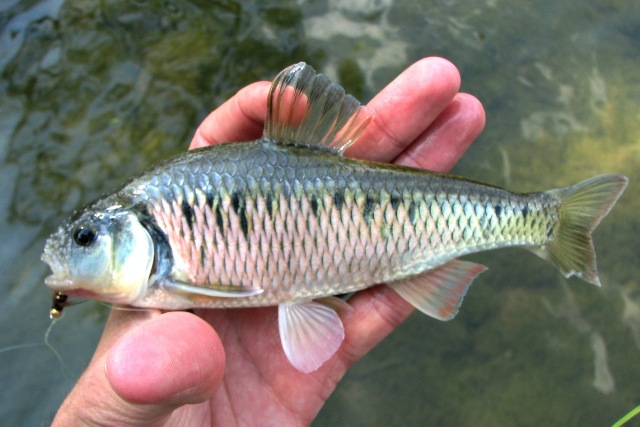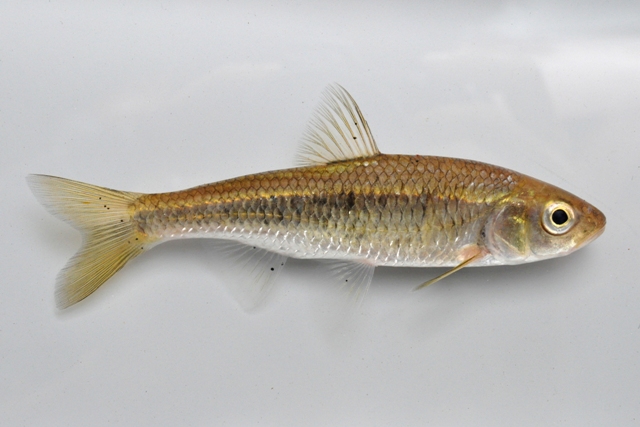Striped Shiner
(Luxilus chrysocephalus)


Large breeding male striped shiners have a bright pinkish-red coloration to their sides, lower fins, and edge of their tail (left). Non-breding males, females and smaller individuals are more silvery (right). These and several other large minnow species can be readily caught hook and line. They will take a wide variety of artificial and natural baits.
Description
The striped shiner is a deep-bodied and slab-sided large species of minnow. They have large scales and silvery sides with a darker colored back. They get their name from the series of dark stripes that run down their back and come together in the center of their back behind the dorsal fin forming "V" shapes. They usually have a few dark colored scales which look like dark blotches along their sides. They are very similar to the closely related common shiner which is only found in Northern Ohio. The best way to distinguish striped shiners from common shiners is to look at the scales directly behind the head on their back. On a striped shiner these are relatively evenly sized and on the common shiner they are smaller than the scales on the rest of their back and appeared squished together. Breeding male striped shiners get a bright pinkish-red coloration on their sides, lower fins, and rear edge of their tail. They also get small pointy bumps on their head called tubercles which they use to defend territories from rival males.
Habitat and Habits
Striped shiners are found throughout Ohio in small to medium sized streams. They prefer streams with relatively clear water and clean gravel and sand substrates. They are much more abundant than the very similar common shiner. They spend most of their time in deeper pools and can often be seen eating insects off the surface. Striped shiners are frequently caught hook and line by stream fisherman.
Reproduction and Care of the Young
Striped shiners spawn in large schools at the top or bottom end of a riffle. Males dig out shallow pits with their tails in course sand or fine gravel substrates. The eggs of many females are then scattered into these shallow nests. After spawning the adults return to deeper pools where they spend most of their time. After hatching the young drift down stream and spend their time near the edge of pools in shallow water.